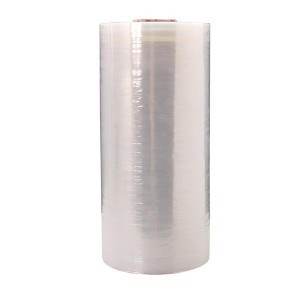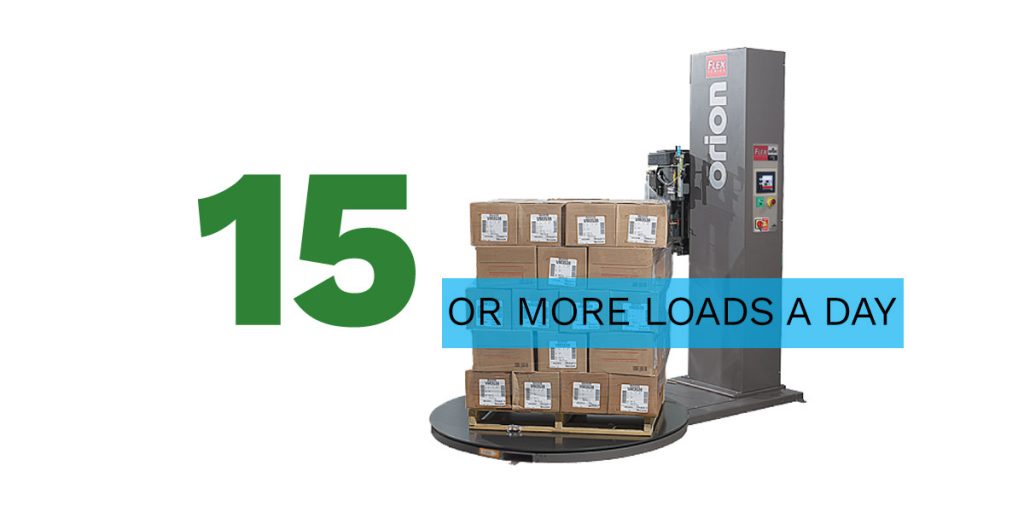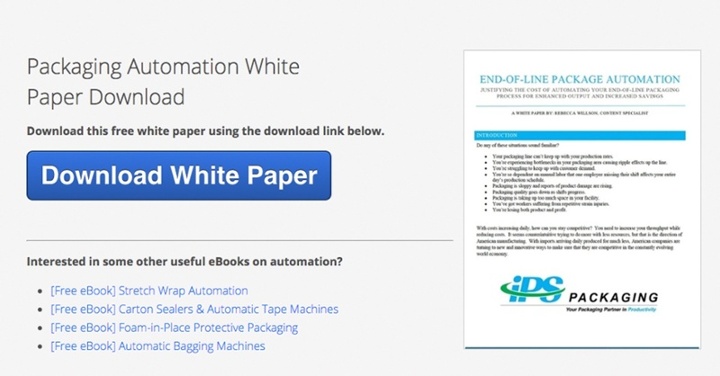
*Updated 05-18-18*
Choosing Stretch Wrapping Equipment
When it comes to stretch wrapping equipment, make sure you don’t lose sight of the most important reason why you’re wrapping in the first place; to get your load from its origin to its destination in the same condition in which it left. Stretch wrappers do the job better than people, but they are not capable of making decisions as they work. You’ll need to understand a few things about what you want the machine to be able to do, so you can make the right choice. Lucky for you, we’re going to list them out.
It’s time to upgrade to machine grade stretch wrap, the hand film you’ve been using won’t work with stretch wrapping equipment. You’ve got to consider the gauge, the pre-stretch ability, and the material of the film.
How much load containment force do you need?
The top, middle, and bottom layers of your load all need to have the correct amount of containment force. The right amount of containment force depends on the type of load you’re wrapping. Heavy loads may require more containment force and lighter loads may require less. With stretch wrappers, you'll get the right containment force needed for each load.
Containment force- The wrap force multiplied by the number of film layers.
How will you wrap the pallets and how many wraps will be necessary?
The way the load is wrapped depends on your settings. You need to choose the number of top and bottom counts. You must also decide the wrap force setting and how much overwrap you want applied on the top of the load.
 Stretch wrappers are justified with a positive ROI if you're wrapping 15 or more loads per day.
Stretch wrappers are justified with a positive ROI if you're wrapping 15 or more loads per day.What will you do to limit breakage?
Breaks are more than just an annoyance. They’re the biggest problem in stretch wrapping. Often, they lead to a chain of disastrous consequences. To limit your risk for breaks, there are a few things you can do.
- Keep your products from overhanging the pallet and try to eliminate sharp corners.
- Train operators to properly handle film. Improper film threading is a main cause of film breaks. Film breaks can occur when the film roll experiences nicks. These nicks happen when the film roll has been dropped or mishandled.
- Don’t buy “cheap” film, which has higher risk for flaws (gels, nicks, tears). Cheap film doesn’t have the ability to stretch as far as performance films.
- Don’t set the wrap force too high. Depending on your film and product, play around with the tension of the film to determine the best setting.
 How much load containment force do you need?
How much load containment force do you need?Do you need additional reinforcements?
You may need to secure partial layers with the roping technique or you may need to band. Sometimes your load may even call for steel or polyester strapping. Stretch wrap can’t solve all your potential issues, especially if your load is heavy and/or unstable.
What type of stretch wrappers are best suited for your specific application?
Think about the size, weight, and variability of the loads you will be wrapping. Highly variable loads would benefit from certain types of machinery, such as orbital, horizontal wrappers that secure the load most securely to the pallet. Stable, light-weight loads of consumer goods would do well with a turntable style wrapper, while unstable or heavy loads would do better with a rotary arm machine.
What kind of production speed to you require?
If you’re moving from a hand wrap application to simple automation, a semi-automatic stretch wrapper may be all that is required. Although stretch wrappers still require a person to manually attach the film to the load at the beginning of the wrap cycle and cut the film at the end of the cycle, they can achieve rates as high as 35 loads per hour.
READY FOR MORE?
See also:
- eBook: Stretch Wrap- Choosing to Automate
- Machine Stretch Wrap 101
- Improve stretch wrapping efficiencies on the packaging line
- Stretch Wrap Guide
*Editors note. This post was originally published on March 13, 2018 and has been updated with the most up to date content.
Follow our Knowledge Base for the latest blogs on packaging supplies, equipment, case studies, and more ways to save money.
Follow us on LinkedIn, Twitter, and Facebook and click those share buttons below if this post helped you.






